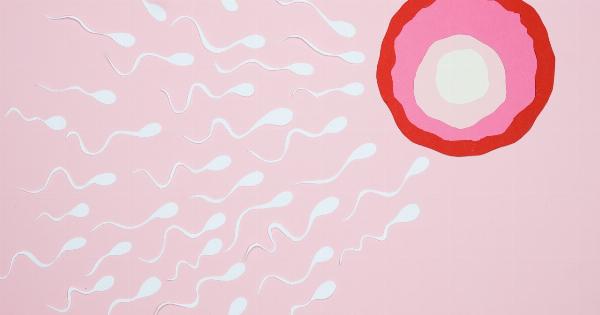Infertility affects about 15% of couples trying to conceive, with male factor infertility being a significant contributor.
While there are various factors that can affect male fertility, recent research suggests that childhood exposures may play a role in the development of fertility issues later in life. This article explores the link between childhood risk factors and male infertility, as well as potential ways to reverse these risks.
Understanding Male Infertility
Male infertility refers to a man’s inability to impregnate a fertile female partner. It can be caused by various factors such as low sperm count, poor sperm motility, abnormal sperm morphology, or hormonal imbalances.
While these factors can arise from genetic or medical conditions, lifestyle and environmental factors can also significantly impact male fertility.
The Influence of Childhood Risk Factors
Several studies have suggested that the environment a person is exposed to during childhood may impact their fertility in adulthood. Certain childhood risk factors that have been associated with male infertility include:.
1. Prenatal Exposures
Exposure to certain chemicals or toxins during fetal development can affect the development of the reproductive system in males.
Substances like smoking, alcohol, and certain medications have been linked to reduced sperm production and quality later in life.
2. Endocrine Disruptors
Endocrine disruptors are chemicals that interfere with the body’s hormonal system. Exposure to these chemicals during childhood can disrupt the normal hormonal balance required for healthy reproductive function.
Some common sources of endocrine disruptors include plastics, pesticides, and personal care products.
3. Obesity and Poor Nutrition
Childhood obesity and poor nutrition have been linked to an increased risk of infertility in adulthood. The excess weight can lead to hormonal imbalances, while poor nutrition can affect the development and health of the reproductive organs.
4. Testicular Trauma
Injuries to the testicles during childhood, such as from sports-related accidents, can impact future fertility. Trauma to the testes can cause structural damage or disrupt the production of healthy sperm.
Reversing Childhood Risks
While the impact of childhood risk factors on male infertility is concerning, the good news is that some of these risks can be reversed or mitigated. Here are some potential ways to reverse childhood risks:.
1. Lifestyle Changes
Adopting a healthy lifestyle can greatly improve fertility outcomes.
This includes maintaining a healthy weight, eating a balanced diet rich in fruits and vegetables, exercising regularly, avoiding smoking and excessive alcohol consumption, and managing stress levels.
2. Environmental Changes
Avoiding exposure to toxic substances and endocrine disruptors is crucial for preserving fertility.
This includes minimizing contact with plastics, choosing organic foods, using natural personal care products, and reducing exposure to pesticides and other chemicals.
3. Seeking Medical Advice
If you suspect that childhood risk factors are impacting your fertility, it is essential to seek medical advice and undergo a comprehensive fertility evaluation.
Fertility specialists can conduct tests to assess sperm quality, reproductive hormone levels, and identify any underlying medical conditions that may be contributing to infertility.
4. Assisted Reproductive Techniques
For couples struggling with male infertility, assisted reproductive techniques such as in vitro fertilization (IVF) or intracytoplasmic sperm injection (ICSI) can help overcome fertility issues.
These procedures involve fertilizing eggs outside the body or directly injecting sperm into the eggs to facilitate fertilization.
Conclusion
The link between childhood risk factors and male infertility highlights the importance of early intervention and preventive measures to preserve future fertility.
By making lifestyle changes, minimizing exposure to harmful substances, and seeking medical advice when needed, it is possible to reverse some of the childhood risks and improve fertility outcomes. Remember, addressing male infertility is a shared responsibility, and open communication between partners and healthcare professionals is crucial for successfully overcoming fertility challenges.




























